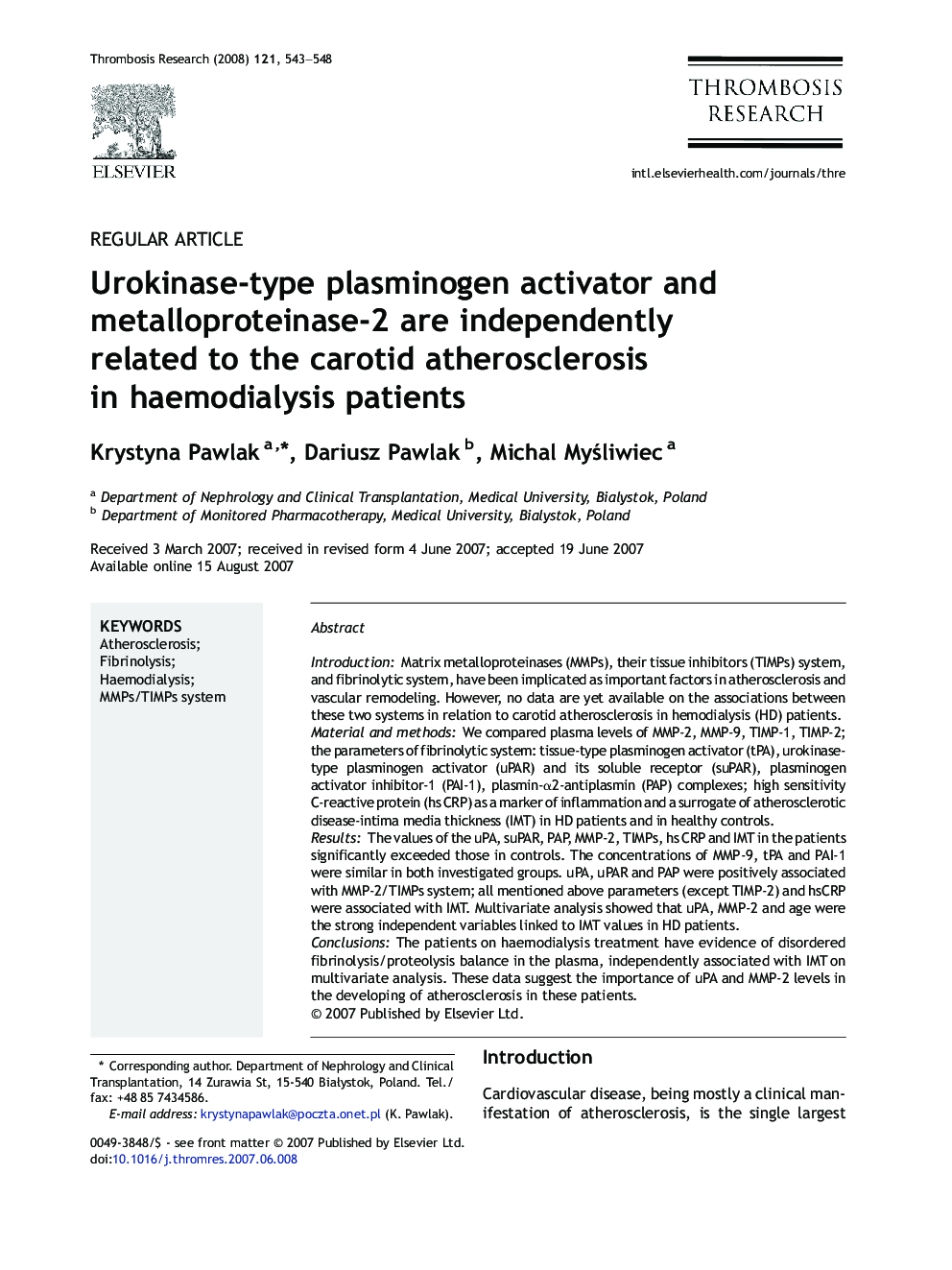| کد مقاله | کد نشریه | سال انتشار | مقاله انگلیسی | نسخه تمام متن |
|---|---|---|---|---|
| 3029681 | 1183105 | 2008 | 6 صفحه PDF | دانلود رایگان |

IntroductionMatrix metalloproteinases (MMPs), their tissue inhibitors (TIMPs) system, and fibrinolytic system, have been implicated as important factors in atherosclerosis and vascular remodeling. However, no data are yet available on the associations between these two systems in relation to carotid atherosclerosis in hemodialysis (HD) patients.Material and methodsWe compared plasma levels of MMP-2, MMP-9, TIMP-1, TIMP-2; the parameters of fibrinolytic system: tissue-type plasminogen activator (tPA), urokinase-type plasminogen activator (uPAR) and its soluble receptor (suPAR), plasminogen activator inhibitor-1 (PAI-1), plasmin-α2-antiplasmin (PAP) complexes; high sensitivity C-reactive protein (hs CRP) as a marker of inflammation and a surrogate of atherosclerotic disease-intima media thickness (IMT) in HD patients and in healthy controls.ResultsThe values of the uPA, suPAR, PAP, MMP-2, TIMPs, hs CRP and IMT in the patients significantly exceeded those in controls. The concentrations of MMP-9, tPA and PAI-1 were similar in both investigated groups. uPA, uPAR and PAP were positively associated with MMP-2/TIMPs system; all mentioned above parameters (except TIMP-2) and hsCRP were associated with IMT. Multivariate analysis showed that uPA, MMP-2 and age were the strong independent variables linked to IMT values in HD patients.ConclusionsThe patients on haemodialysis treatment have evidence of disordered fibrinolysis/proteolysis balance in the plasma, independently associated with IMT on multivariate analysis. These data suggest the importance of uPA and MMP-2 levels in the developing of atherosclerosis in these patients.
Journal: Thrombosis Research - Volume 121, Issue 4, 2008, Pages 543–548